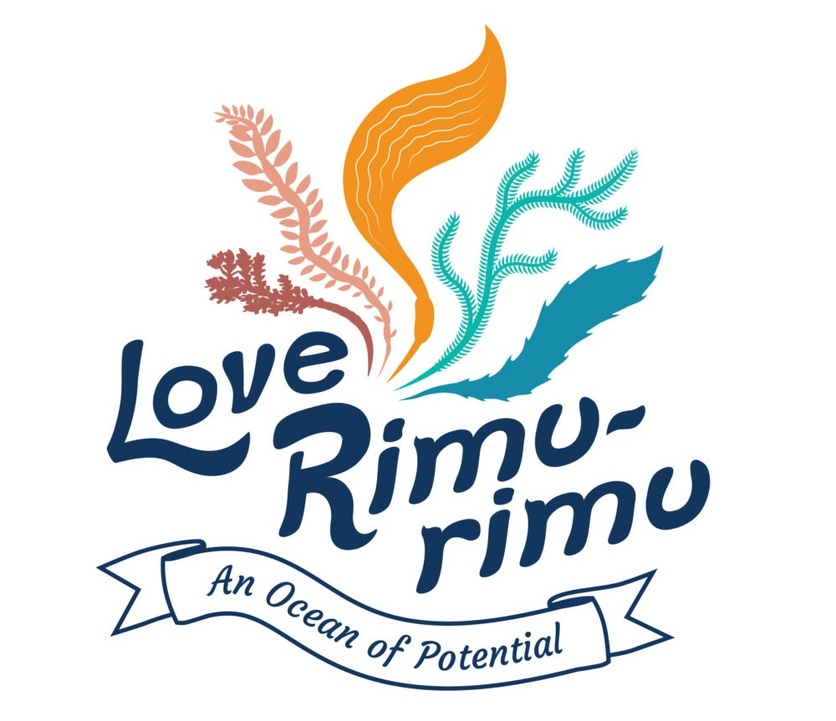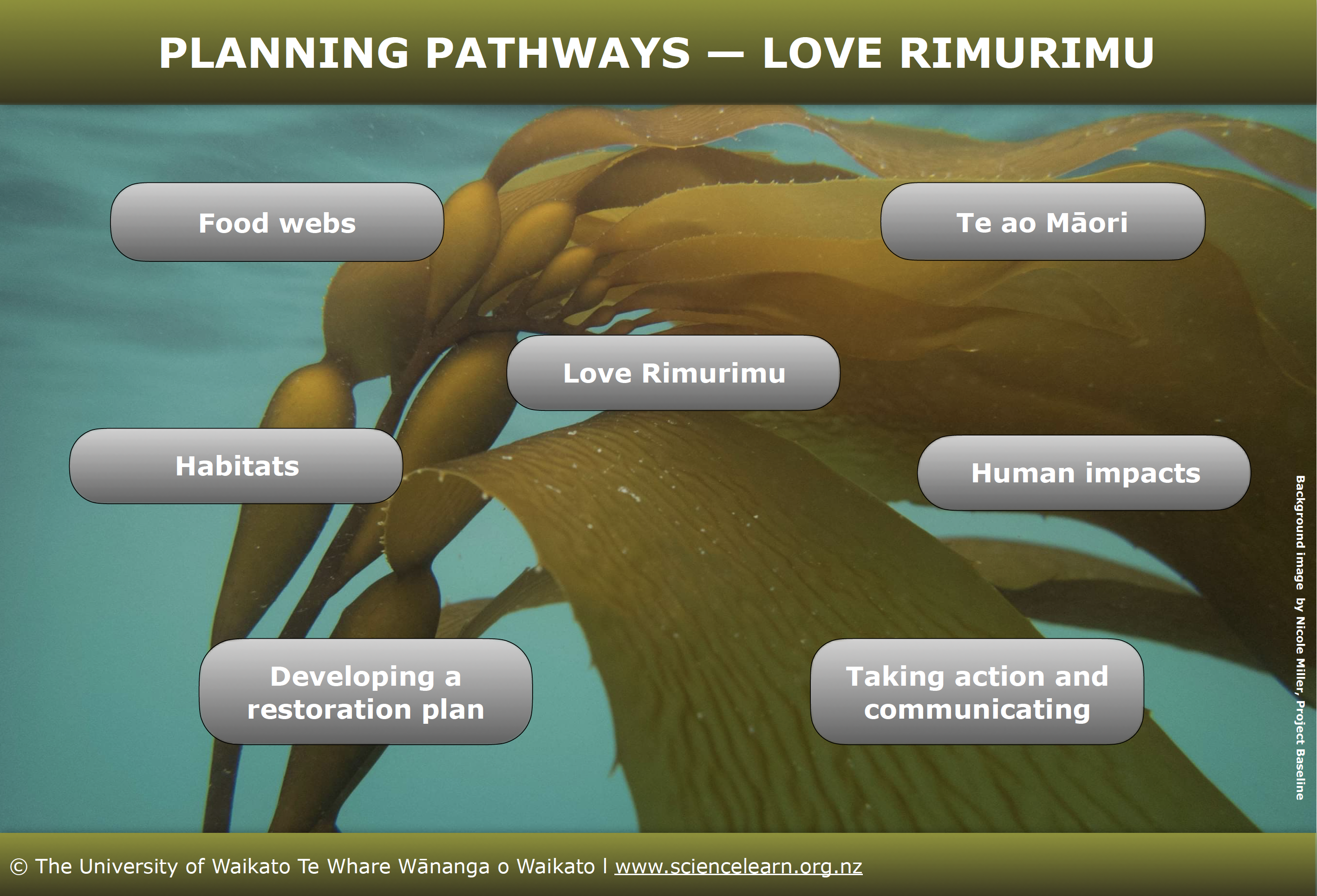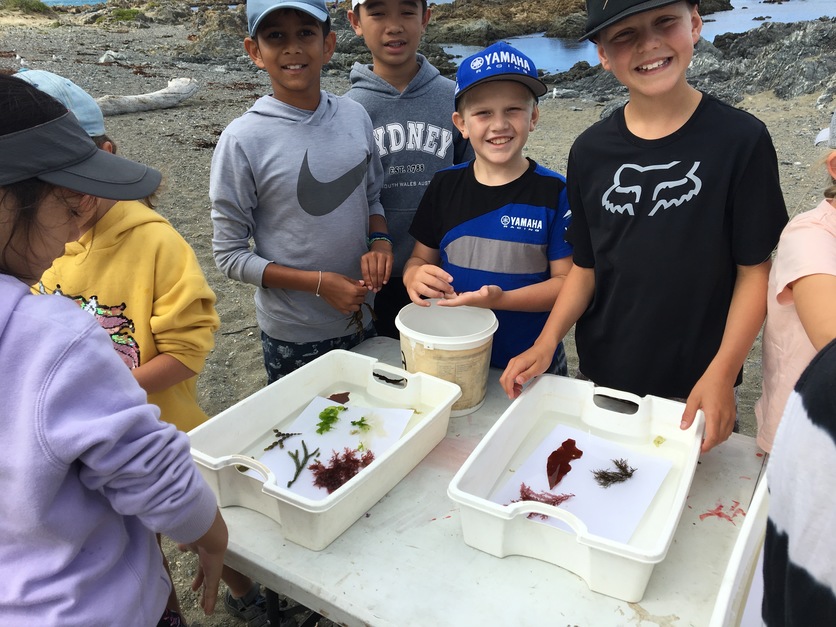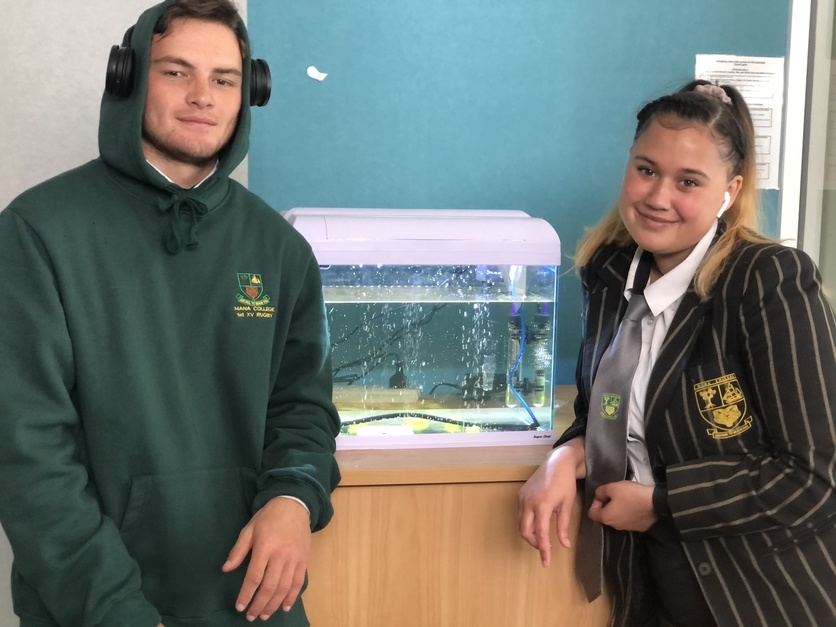We hear a lot about the role of terrestrial forests in climate change, but what about the ocean’s forests? It’s amazing to think that a kelp forest the size of the Amazon rainforest could absorb more CO2 than humans produce. That’s just one amazing fact about rimurimu (seaweed). Not only does rimurimu absorb more carbon than trees, it also improves water quality and provides habitats for thousands of marine creatures.
These important ecosystem services have inspired Mountains to Sea Wellington (MTSW) to initiate the Love Rimurimu project. The MTSW team worked with Mana College, Scots College, Te Kura Kaupapa Māori o Ngā Mokopuna and Koraunui School to learn about their local underwater forests and how ākonga can help with their conservation. The programme built upon the experiences provided through the national Experiencing Marine Reserves programme.
The Love Rimurimu project is supported by experts and technical advisors from the National Institute of Water and Atmospheric Research (NIWA), Victoria University, Experiencing Marine Reserves, Te Aho Tū Roa and the Wellington Underwater Club.
Wellington harbour and the blue belt has a flourishing ocean forest, cared for by our local communities. Our seaweed forests are valued for their beauty and ecosystem services – absorbing carbon, steadily improving water quality and as a home to an increasing abundance of marine life.
Love Rimurimu vision
Exploration in the classroom and in the field
Love Rimurimu is a year-long inquiry. The initial focus is on seaweed biodiversity and its importance in the marine environment. Observation and mātauranga Māori are interwoven throughout the programme.
Introductory sessions begin in the classroom with information about seaweed structure, ecosystems and habitats and the three different groups of seaweed: parāone (browns), kākāriki (greens) and whero (reds). Learning then moves to shore and water-based experiences, which may include snorkelling sessions. Students use transects and quadrats to observe the biodiversity of the seabed. They also collect seaweed samples for pressing and for photosynthesis experiments to observe and measure seaweed’s ability to absorb CO2 from the water and produce oxygen.
Armed with knowledge about rimurimu habitats and the ecosystem services they provide, the second term of the inquiry focuses on the human impacts that affect seaweed health. Students learn about risks from pollution, sedimentation, overfishing, ocean acidification and climate change.
Uses for rimurimu
During the third term, the inquiry turns to exploring practical uses for rimurimu. Seaweed is an amazingly versatile product. In 2019, the global commercial seaweed market was over NZ$18 billion! The food and cosmetics industries are interested in seaweed due to its sustainability, health benefits and ecosystem services. The MTSW team held workshops, making seaweed-based products including bath bombs, face masks, fertilisers, bioplastics and kai.
Community engagement
The final part of the inquiry takes place in term 4. Students are encouraged to reflect on their actions, share their knowledge with the wider community and consider how they can support rimurimu conservation. The initial cohort of schools that worked with MTSW in 2020 held workshops, delved more deeply into the sources of pollution affecting their local beaches and joined the Litter Intelligence citizen science project.
Giant kelp, which loves the cold waters of Aotearoa, is the fastest-growing organism in the world as it can lengthen by as much as 60 cm in a day. However this doesn’t apply if the spores can’t develop in the first place – one of the many problems seaweeds are facing today.
Curious Minds
Delving deeper
In addition to experiments that investigate seaweed photosynthesis, ākonga also have the opportunity to harvest rimurimu spores and attempt to germinate them and grow rimurimu in a classroom aquarium. They have found that this isn’t necessarily a straightforward process. During the 2020 season, warm water temperatures meant that giant kelp spores were released sooner than the MTSW team expected. Students who successfully grew spores hope that growing rimurimu and returning it to coastal areas will help restore the habitat and clean up the water.
Love Rimurimu resources
The MTSW team has developed resources to support the Love Rimurimu Project in downloadable PDF format (and one PowerPoint). The resources in te reo Māori are courtesy of Te Aho Tū Roa.
- Love Rimurimu teacher preparation – term 1: Seaweed biodiversity and its importance in the marine environment (PDF, 839 KB)
- Love Rimurimu teacher preparation – term 2: Human impacts and climate change (PDF, 904 KB)
- Hopi paura pakō (rimurimu bath bombs) (PDF, 3 MB)
- Paraoa rimurapa (rimurimu pasta) (PDF, 5.1 MB)
- Seaweed harvesting and storage guide (PDF, 794 KB)
- Seaweed pressing method (PDF, 910 KB)
- Growing rimurimu experiment (PDF, 1.1 MB)
- Seaweed photosynthesis experiment (PDF, 1.1 MB)
- Tautuhi Rimurimu – Te whānau rimurimu kei Te Upoko o Te Ika (PDF, 37.7 MB)
- Love Rimurimu seaweed identification guide – Wellington’s top seaweeds (PDF, 3.2 MB)
- Wellington Underwater Club seaweed identification guide (PDF, 7 MB)
- Wellington Underwater Club infographics in te reo Māori and English (PDF, 1.8 MB)
- Seaweed fun facts (PDF, 805 KB)
- Rimurimu fun facts – slideshow (PPT, 416 KB)
Related content
The citizen science project Floating Forests needs the help of citizen scientists to identify kelp forests from satellite images.
Discover the mātauranga that underpins pōhā – bags made from rimurapa, a species of bull kelp, that preserve tītī (muttonbirds) for up to 2 years.
Kelp forests feature in the infographics housed in the New Zealand marine habitats interactive.
The Threats to marine habitats interactive displays some of the stressors that kelp forests face in Aotearoa and globally.
Not all threats are caused by humans. The 2016 Kaikōura earthquake exposed kelp forests. The article Kelp forests after the Kaikōura earthquake provides information on many of kelps’ ecosystem services and why scientists are keen to research the impacts caused by the earthquake.
See our Seaweed and algae Pinterest board for more resource ideas.
Useful links
Mountains to Sea launched the roll-out of the Rimurimu Project in 2020. If you would like to get involved with the project, please contact MTSW at info@mtsw.org.nz.
Watch a swim-through ID video of some of the most common seaweeds found in Te Whanganui-a-Tara Wellington.
Love Rimurimu is piloting a regeneration project in Wellington that involves mana whenua, industry, community and schools. There are also links to additional information and resources on their website.
Listen to Zoe Studd from Mountains to Sea, Wellington in this 2022 RadioNZ interview to find out more about the charitable trust. Zoe is also featured in these Our Changing World interviews: Marine reserve sightseeing from 2022 and in Restoring Wellington’s seaweed forests in 2024.
Read more about this Curious Minds project with Mana College in their school's newsletter When kelp needs help: saving our sea forests.
Watch Tihei Rimurimu | Te Ūpoko o Te Ika, a video produced by Te Aho Tū Roa that features tauira working with the Love Rimurimu project.
Visit the citizen science project website for Project Baseline in which divers (scuba divers, free-divers, & snorkelers) from all walks of life around the world have come together to be a voice for underwater environments worldwide. Since 2009, Project Baseline has been systematically documenting changes in the underwater world to facilitate scientific studies and establish protection for these critical underwater environments.
See the Sustainable Seas Building a seaweed sector, this framework, which was released in October 2022, sets out key priorities in leadership, research and regulation for the seaweed sector to support a blue economy in Aotearoa.
This article from 2023 in The Conversation covers how new research is demonstrating that New Zealand’s vital kelp forests are in peril from ocean warming – threatening the important species that rely on them.
Acknowledgement
The Love Rimurimu project was funded in 2020 by Unlocking Curious Minds with support from the Henderson Trust, Wellington City Council and Experiencing Marine Reserves. The journey continues in 2021 with thanks to WWF and the Wellington Community Trust.





